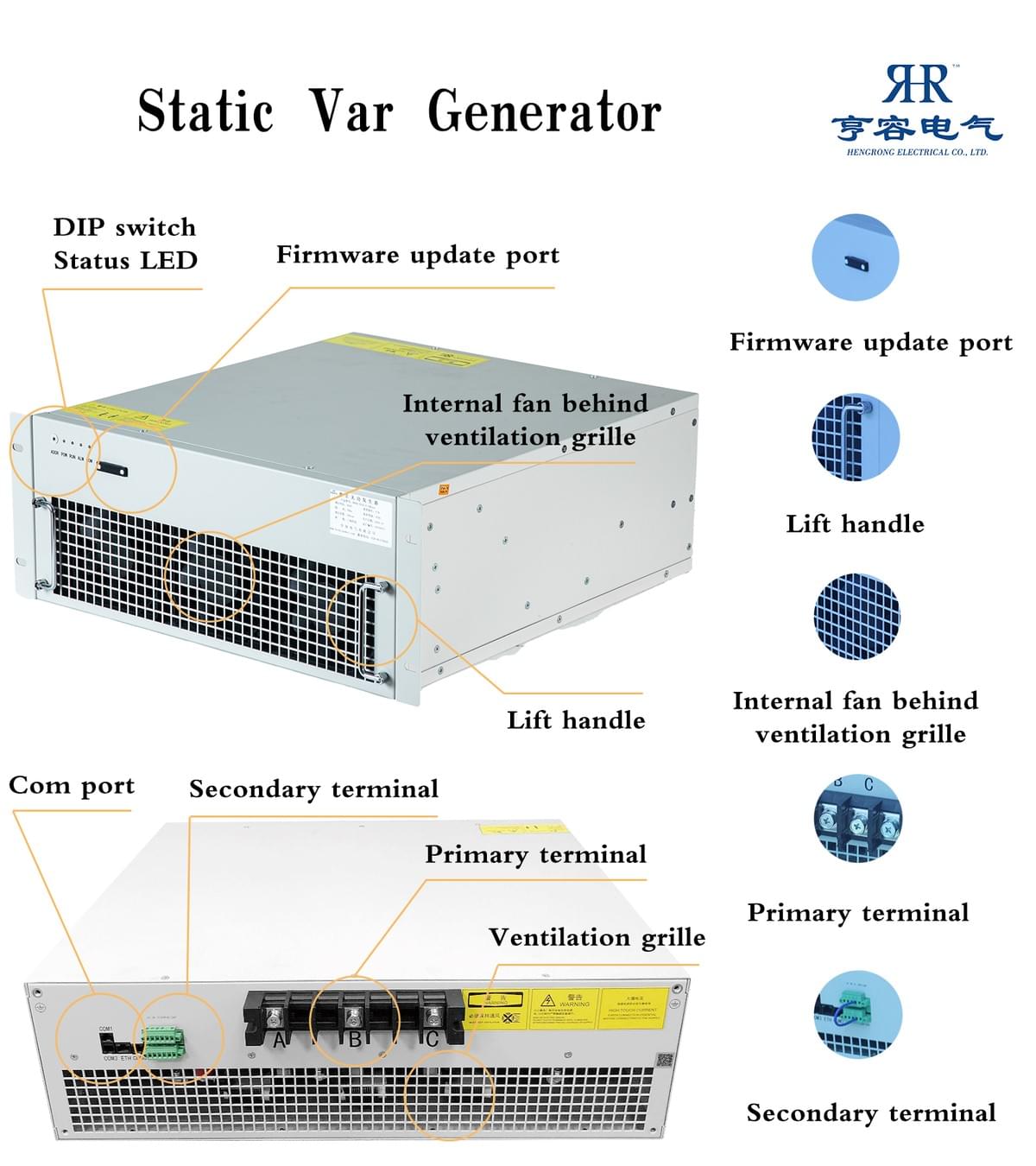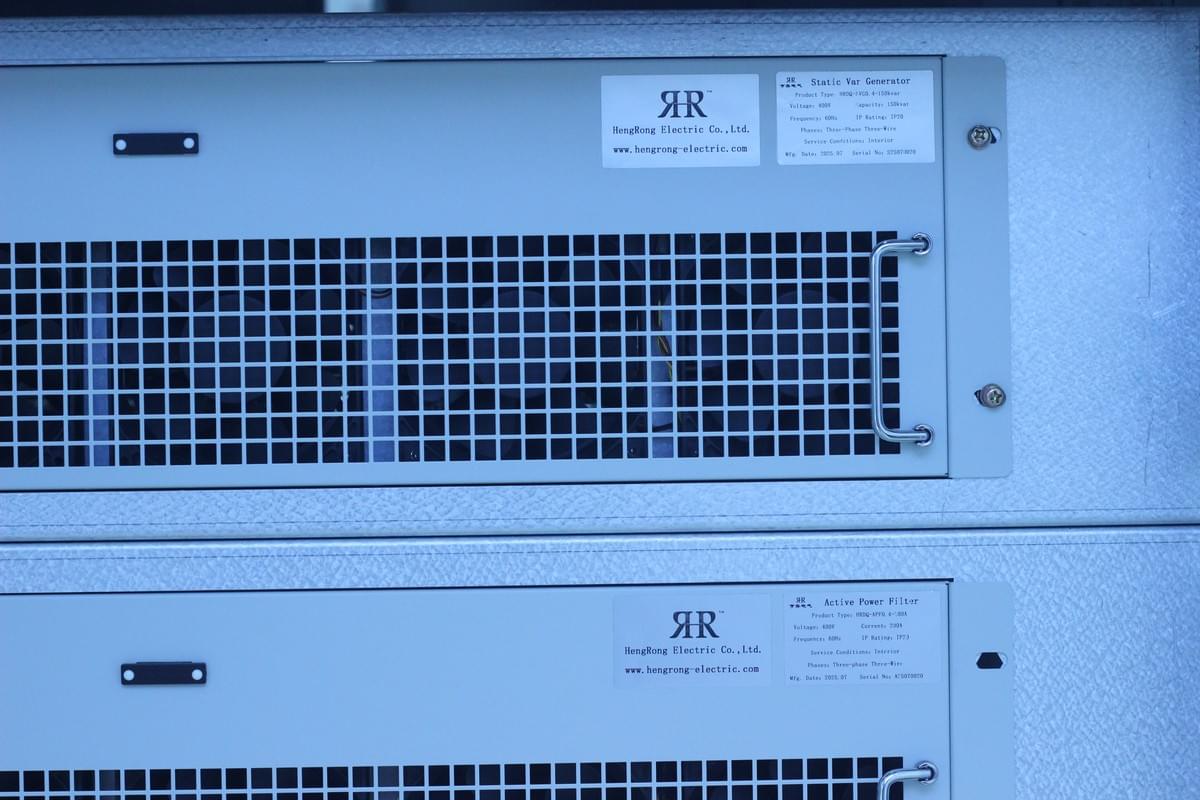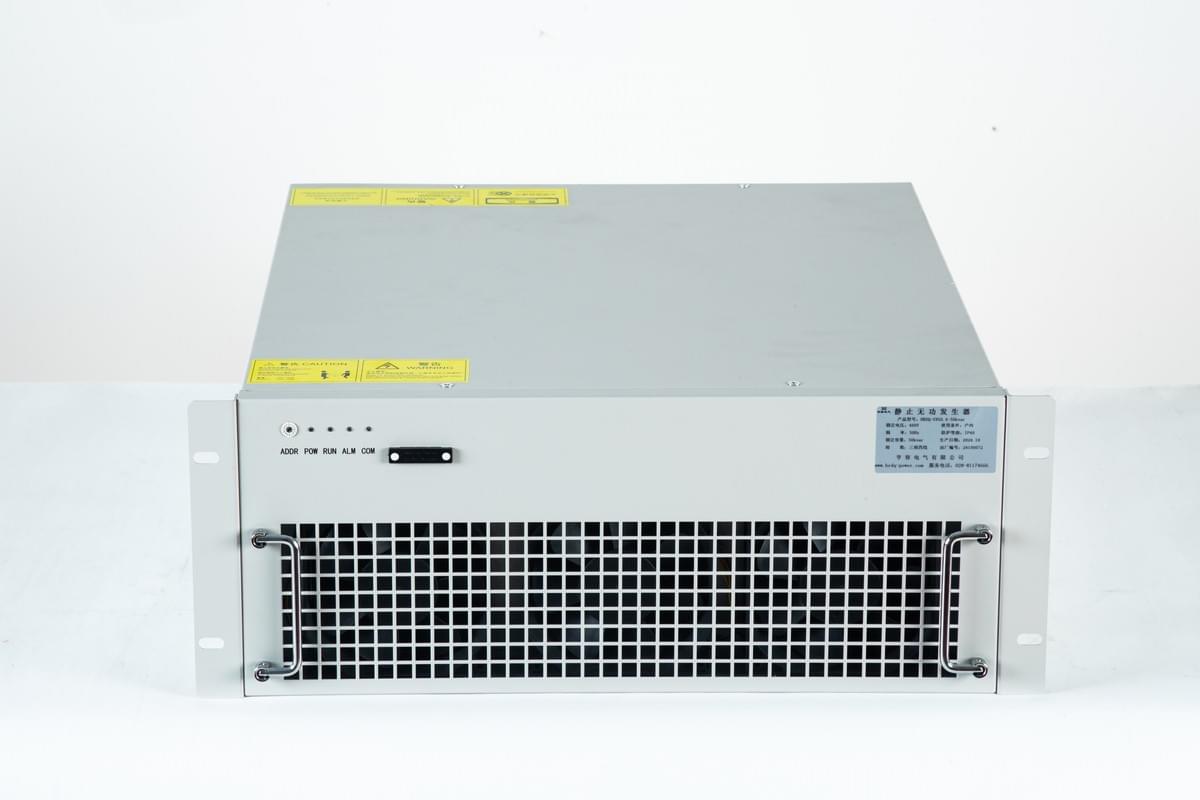1. Introduction: The Importance of Power Quality and Reactive Compensation
As society's demand for electricity continues to grow, power transmission systems are developing towards high-voltage, ultra-high-voltage, and large-capacity configurations. However, a key issue gradually emerges in this process—reactive power and power quality.
Excessive reactive power increases line losses, causes voltage dips, and negatively impacts system stability, reducing transmission capacity and efficiency.

Traditional reactive compensation methods rely heavily on reactors and capacitors, but these devices are bulky, high in loss, and lack flexibility in adjustment, making them increasingly inadequate for modern power grid demands.
At this point, the Static Var Compensator (SVC or STATCOM), as a next-generation reactive power compensation technology, stands out for its fast response, intelligent regulation, and high adaptability, making it a key tool for improving power quality.
Among the many technological routes for static reactive compensators, the topology based on multiple superposed converters has gradually become a hotspot due to its high efficiency, low harmonics, and scalability.
2. What is a Static Reactive Compensator (SVC / STATCOM)?
A static reactive compensator is a dynamic reactive power compensation device based on power electronic technology. It can quickly adjust reactive power to stabilize the voltage and improve power quality in the grid.
Compared to traditional compensation devices, static reactive compensators offer the following advantages:
Fast response: Millisecond-level adjustment to adapt to dynamic changes in the grid.
Flexible compensation: Capable of providing both capacitive and inductive reactive power.
Strong harmonic suppression capability: Some topologies can simultaneously implement filtering functions.
Adaptable to large-scale applications: Widely used in wind power, photovoltaic systems, rail transportation, and industrial parks.

However, traditional static reactive compensators based on three-phase bridge converters suffer from high switching frequencies, high losses, and high harmonic content, which limit their application in high-capacity scenarios.
3. Multiple Superposed Converters: A Key Technology to Enhance Performance
1. Principle of Multiplexing Technology
The core idea of multiplexing technology is to sh
ift the output voltage waveforms of multiple converters by a phase-shifting transformer and then superimpose them, resulting in a multi-level stepped waveform on the AC side.
As the number of levels increases, the output waveform becomes closer to an ideal sine wave, significantly reducing harmonic content and increasing the fundamental frequency component.
2. Advantages of Multiple Superposed Converters
Ex
cellent harmonic suppression: The higher the number of levels, the better the output waveform quality, with lower harmonic content.
Lower losses: The switching frequency of each converter unit is lower, reducing switching losses and improving efficiency.
Adaptability to high power scenarios: Strong scalability, suitable for achieving high voltage and large capacity output.
Flexible structure: It can use either ordinary transformers or tortuous transformers to achieve phase shifting.
4. Two Typical Topologies
1. Multiple Superposed Converters Combined with Ordinary Transformers
This topology utilizes ordinary transformers with different connection groups (such as Y/d and d/d) to create a phase difference and then superimpose the output voltage.
Features:
Can suppress 6k±1 harmonics;
However, it has limited effectiveness in suppressing specific harmonics such as the 5th, 7th, and 17th harmonics;
- Usually requires inductors or capacitors to be added on the DC side for further compensation.
- 2. Multiple Superposed Converters Combined with Tortuous Transformers
Tortuous transformers can provide more complex phase shifts. After combining with multiple single-phase bridges or H-bridge circuits, it can achieve higher-order multiplexing, such as an 8-l
evel topology.
Features:
Can suppress 6n-1 and lower-order harmonics;
Outputs up to 48 pulses, with high harmonic cancellation;
Power factor improvement on the grid side is more significant;
- Especially suitable for large-scale power transmission and renewable energy grid integration.
- 5. Simulation Validation and Performance Analysis
Harmonic content of output current was only 0.31%, well below the national standard of 5%;
Output voltage harmonic content was 24.93%, but the impact on the grid was minimal;
Grid side power factor increased rapidly to 1 after a brief dynamic adjustment, showing that the compensator effectively compensated for reactive power and improved power quality.
These results fully validate the advantages of the multiple superposed converter topology in static reactive compensators.
6. Application Scenarios and Market Prospects
1. Industrial Applications
Steel
and Metallurgical Enterprises: Large amounts of nonlinear loads lead to power factor degradation, requiring efficient reactive power compensation.
Rail Transportation: SVC can suppress harmonics and improve stability in metro and high-speed railway power supply systems.
Large-Scale Manufacturing: Industries with high concentrations of motors, welding machines, and inverters require stringent power quality control.
2. Renewable Energy Grid Integration
Wind
Power Plants: Compensate for reactive power impacts due to wind speed variations, maintaining voltage stability.
Photovoltaic Power Stations: Suppress harmonics from inverters and improve grid integration quality.
Energy Storage Stations: Enhance dynamic regulation capabilities of the system.
3. Market Potential
With the promotion of the "dual
carbon" strategy and the development of smart grids, the market scale for reactive power compensation is continuously growing. According to forecasts, the SVC/STATCOM market in China is expected to exceed hundreds of billions by 2030.
The multiple superposed converter topology, with its high efficiency, low harmonics, and large capacity, is bound to become a core direction for the industry's development.
7. SEO Optimization Strategy
To ensure this article achieves high exposure in search engines, the following keywords will be strategically incorporated:
Static Reactive Compensator
- Multiple Superposed Converter
- Power Quality Control
- Reactive Power Compensation
- Tortuous Transformer
- STATCOM Application
- Renewable Energy Grid Integration
- By naturally embedding these keywords in the title, subtitles, body text, and conclusion, and maintaining logical flow and professional content, the article’s ranking in search engines like Google and Baidu will be significantly improved.
8. Conclusion: The Power Compensation Solution for the Future
The static reactive compensator based on the multiple superposed converter topology not only solves the problems of high harmonic content and losses in traditional three-phase bridge-based SVC/STATCOM systems, but also achieves high ef
ficiency, low harmonics, and stable operation in large power scenarios.
The simulation results show that this topology:
Greatly reduces current harmonic content;
- Significantly improves grid-side power factor;
- Meets modern power systems' demand for high power quality.
- With the advancement of the "dual carbon" goals and smart grid construction, this technology will undoubtedly play an important role in various industries, including power transmission, renewable energy integration, and industrial power systems. It is not only a key solution to the reactive power compensation problem but also a vital cornerstone for the future development of green energy and smart grids.

Hengrong Electric Co., Ltd.
We specialize in providing high-efficiency reactive power compensation and power quality optimization solutions. With over 20 years of industry experience, our products excel in enhancing grid efficiency, reducing energy consumption, and ensuring system stability.
Our core products and services include:
Low-voltage Reactive Power Compensation and Power Quality Optimization:
Self-healing Capacitors:
Improve power factor, optimize grid power quality, and extend equipment lifespan with self-healing functionality.
Increased Safety Capacitors:
Designed for hazardous environments with combustible gases, providing high safety and explosion-proof features.
Tuned Reactors:
Effectively absorb grid harmonics, improve voltage waveform stability, and protect capacitors.
Composite and Thyristor Switches: Reliable capacitor switching devices with no inrush current, low noise, and stable operation.
High-voltage Reactive Power Compensation Solutions:
High-voltage Capacitors and Reactors: Enhance high-voltage grid stability, effectively compensate reactive power, and suppress harmonics.
Power Quality Governance:
Active Power Filters (APF):
Eliminate harmonics, improve power quality, and ensure system stability.
Static VAR Generators (SVG):
Provide dynamic reactive power compensation with fast and smooth system response.
Smart and Customized Solutions:
Offer smart power quality management controllers and intelligent compensation devices that adapt to complex grid environments, ensuring optimal operation.
Why Choose Hengrong Electric?
Industry Experience: We have extensive experience in power quality optimization, having delivered reliable solutions for numerous clients across various industries.
Customized Services: We provide tailored solutions based on specific client needs, ensuring the maximum benefits for every project.
Technical Assurance: Our products are internationally certified and feature advanced technology, ensuring high efficiency, reliability, and long-term stability.
